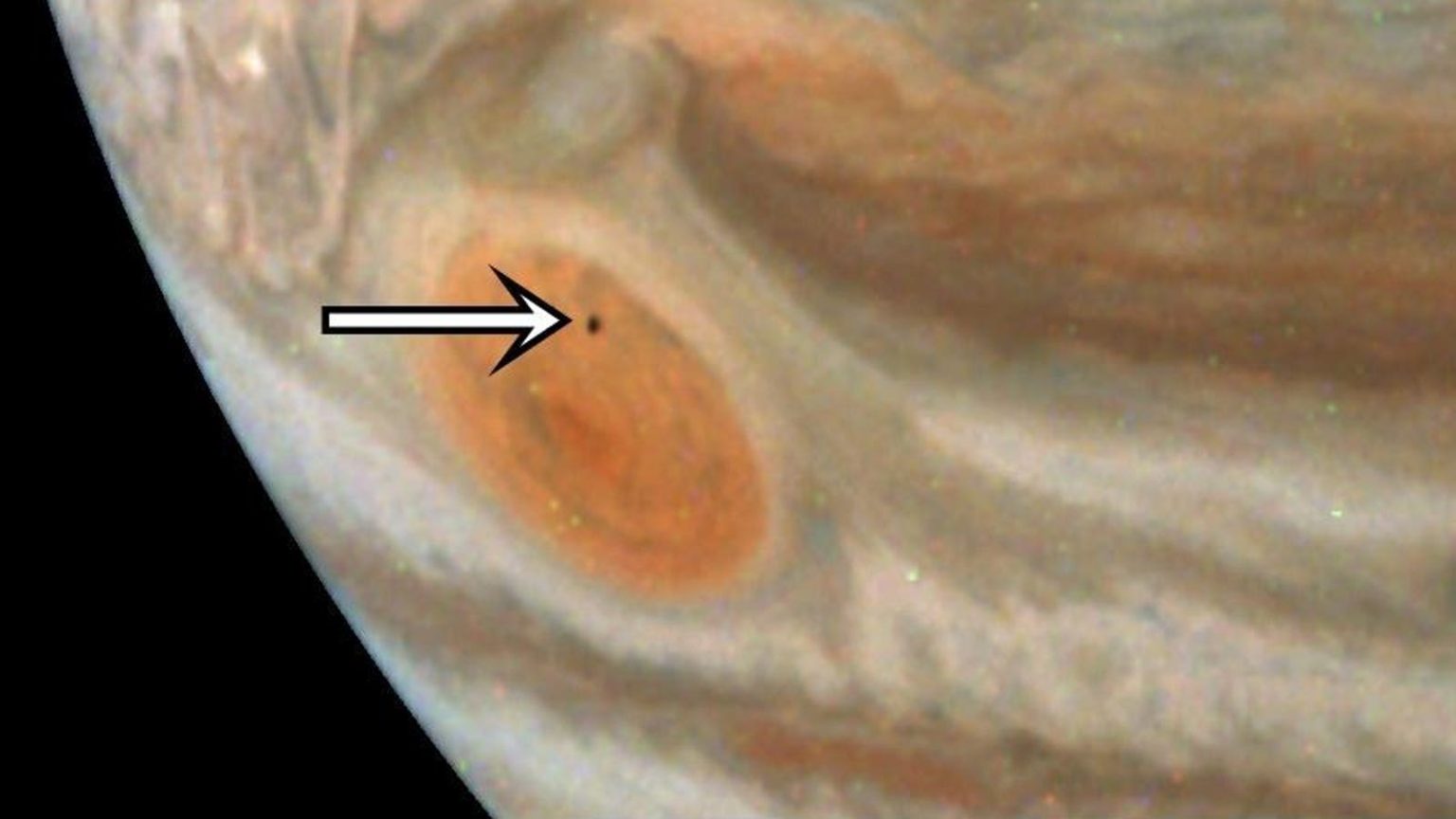The reddest object in the solar system is not Mars, but rather Amalthea, a small moon orbiting Jupiter. NASA’s Juno spacecraft captured images of Amalthea during a close flyby of Jupiter, showing the moon as a dark dot above the planet’s famous Great Red Spot. Amalthea has a radius of 52 miles, is shaped like a potato, and is known for its red hue, possibly influenced by sulfur contamination from Jupiter’s moon Io.
Citizen scientist Gerald Eichstadt processed the Juno images for color and clarity, showcasing Jupiter’s wild atmosphere. Juno’s raw images are made available by NASA for public download, encouraging citizen scientists to explore and process the images to reveal the beauty and mysteries of Jupiter and its moons. Amalthea is known to emit more heat than it receives from the sun, a phenomenon attributed to Jupiter’s powerful magnetic field inducing electric currents in the moon’s core or tidal stresses caused by Jupiter’s gravity.
Juno, launched by NASA in 2016, is on a mission to study Jupiter and its moons, with Amalthea being only one of 95 officially recognized moons of the gas giant. NASA’s upcoming Europa Clipper mission will focus on the moon Europa, known as a potential site for signs of life, as well as the other large moons Io, Ganymede, and Callisto. While these moons are visible from Earth with binoculars, Amalthea is more challenging to spot even with the help of a spacecraft.
Discovered in 1892 by American astronomer Edward Emerson Barnard, Amalthea has been imaged by NASA’s Galileo spacecraft since 1996, revealing impact craters and valleys on its surface. However, due to its close proximity to Jupiter, Amalthea’s orbit is expected to decay over time, eventually leading the moon to fall into the gas giant. Juno, too, has a limited lifespan and is currently in an extended mission phase set to continue until September 2025 or until the spacecraft reaches the end of its life, eventually burning up in Jupiter’s atmosphere.
The unique red hue and heat emissions of Amalthea make it a fascinating object of study for scientists, with Juno’s close-up explorations offering valuable insights into the planet and its moons. As Juno continues to capture images and data during its mission, the understanding of Amalthea and its peculiar characteristics will increase, shedding light on the mysteries of the solar system and the complex interactions between celestial bodies. Despite its inevitable fate, Amalthea continues to intrigue researchers and space enthusiasts alike with its enigmatic properties and position as the reddest object in the solar system.


